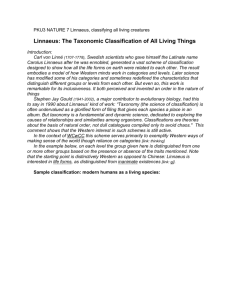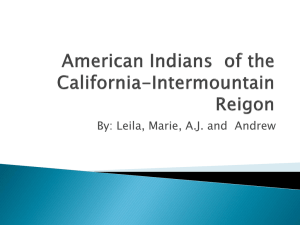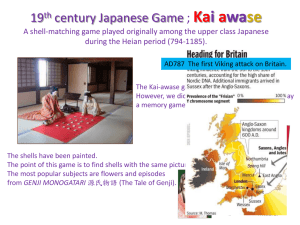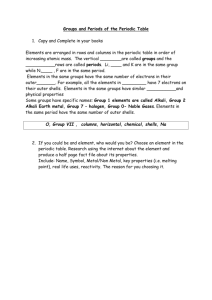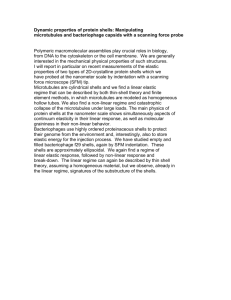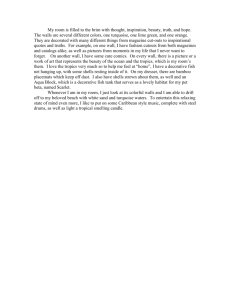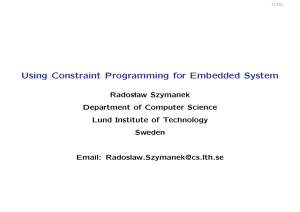geochemistry fine-grained
advertisement
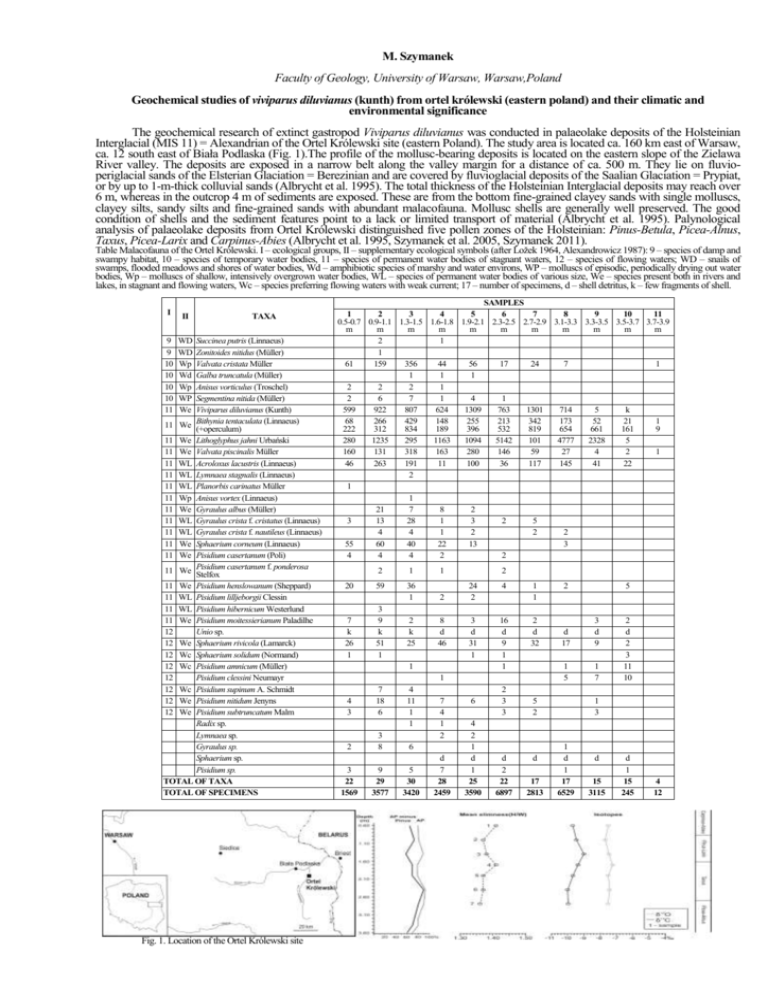
M. Szymanek Faculty of Geology, University of Warsaw, Warsaw,Poland Geochemical studies of viviparus diluvianus (kunth) from ortel królewski (eastern poland) and their climatic and environmental significance The geochemical research of extinct gastropod Viviparus diluvianus was conducted in palaeolake deposits of the Holsteinian Interglacial (MIS 11) = Alexandrian of the Ortel Królewski site (eastern Poland). The study area is located ca. 160 km east of Warsaw, ca. 12 south east of Biała Podlaska (Fig. 1).The profile of the mollusc-bearing deposits is located on the eastern slope of the Zielawa River valley. The deposits are exposed in a narrow belt along the valley margin for a distance of ca. 500 m. They lie on fluvioperiglacial sands of the Elsterian Glaciation = Berezinian and are covered by fluvioglacial deposits of the Saalian Glaciation = Prypiat, or by up to 1-m-thick colluvial sands (Albrycht et al. 1995). The total thickness of the Holsteinian Interglacial deposits may reach over 6 m, whereas in the outcrop 4 m of sediments are exposed. These are from the bottom fine-grained clayey sands with single molluscs, clayey silts, sandy silts and fine-grained sands with abundant malacofauna. Mollusc shells are generally well preserved. The good condition of shells and the sediment features point to a lack or limited transport of material (Albrycht et al. 1995). Palynological analysis of palaeolake deposits from Ortel Królewski distinguished five pollen zones of the Holsteinian: Pinus-Betula, Picea-Alnus, Taxus, Picea-Larix and Carpinus-Abies (Albrycht et al. 1995, Szymanek et al. 2005, Szymanek 2011). Table Malacofauna of the Ortel Królewski. I – ecological groups, II – supplementary ecological symbols (after Ložek 1964, Alexandrowicz 1987): 9 – species of damp and swampy habitat, 10 – species of temporary water bodies, 11 – species of permanent water bodies of stagnant waters, 12 – species of flowing waters; WD – snails of swamps, flooded meadows and shores of water bodies, Wd – amphibiotic species of marshy and water environs, WP – molluscs of episodic, periodically drying out water bodies, Wp – molluscs of shallow, intensively overgrown water bodies, WL – species of permanent water bodies of various size, We – species present both in rivers and lakes, in stagnant and flowing waters, Wc – species preferring flowing waters with weak current; 17 – number of specimens, d – shell detritus, k – few fragments of shell. I II 9 9 10 10 10 10 11 WD WD Wp Wd Wp WP We TAXA Succinea putris (Linnaeus) Zonitoides nitidus (Müller) Valvata cristata Müller Galba truncatula (Müller) Anisus vorticulus (Troschel) Segmentina nitida (Müller) Viviparus diluvianus (Kunth) tentaculata (Linnaeus) 11 We Bithynia (+operculum) 11 We Lithoglyphus jahni Urbański 11 We Valvata piscinalis Müller 11 WL Acroloxus lacustris (Linnaeus) 11 WL Lymnaea stagnalis (Linnaeus) 11 WL Planorbis carinatus Müller 11 Wp Anisus vortex (Linnaeus) 11 We Gyraulus albus (Müller) 11 WL Gyraulus crista f. cristatus (Linnaeus) 11 WL Gyraulus crista f. nautileus (Linnaeus) 11 We Sphaerium corneum (Linnaeus) 11 We Pisidium casertanum (Poli) casertanum f. ponderosa 11 We Pisidium Stelfox 11 We Pisidium henslowanum (Sheppard) 11 WL Pisidium lilljeborgii Clessin 11 WL Pisidium hibernicum Westerlund 11 We Pisidium moitessierianum Paladilhe 12 Unio sp. 12 We Sphaerium rivicola (Lamarck) 12 Wc Sphaerium solidum (Normand) 12 Wc Pisidium amnicum (Müller) 12 Pisidium clessini Neumayr 12 Wc Pisidium supinum A. Schmidt 12 We Pisidium nitidum Jenyns 12 We Pisidium subtruncatum Malm Radix sp. Lymnaea sp. Gyraulus sp. Sphaerium sp. Pisidium sp. TOTAL OF TAXA TOTAL OF SPECIMENS Fig. 1. Location of the Ortel Królewski site SAMPLES 1 2 3 4 5 6 7 8 9 10 11 0.5-0.7 0.9-1.1 1.3-1.5 1.6-1.8 1.9-2.1 2.3-2.5 2.7-2.9 3.1-3.3 3.3-3.5 3.5-3.7 3.7-3.9 m m m m m m m m m m m 2 1 1 61 159 356 44 56 17 24 7 1 1 1 1 2 2 2 1 2 6 7 1 4 1 599 922 807 624 1309 763 1301 714 5 k 68 266 429 148 255 213 342 173 52 21 1 222 312 834 189 396 532 819 654 661 161 9 280 1235 295 1163 1094 5142 101 4777 2328 5 160 131 318 163 280 146 59 27 4 2 1 46 263 191 11 100 36 117 145 41 22 2 1 1 21 7 8 2 3 13 28 1 3 2 5 4 4 1 2 2 2 55 60 40 22 13 3 4 4 4 2 2 20 7 k 26 1 2 1 59 36 1 2 2 k 25 8 d 46 3 9 k 51 1 1 2 24 2 4 1 1 3 d 31 1 16 d 9 1 1 2 d 32 1 1 4 3 7 18 6 2 3 8 3 22 1569 9 29 3577 4 11 1 1 7 4 1 2 6 5 30 3420 d 7 28 2459 6 4 2 1 d 1 25 3590 2 3 3 d 2 22 6897 2 d 17 3 d 9 1 5 1 7 5 2 d 17 2813 5 2 d 2 3 11 10 1 3 1 d 1 17 6529 d 15 3115 d 1 15 245 4 12 Fig. 2 Isotope record of V. diluvianus shells from Ortel Królewski Mollusc assemblage at Ortel Królewski comprises 37 mollusc taxa (20 of snails and 17 of bivalves) represented by 34226 specimens. The number of both taxa and specimens varies between 4 and 30 as well as between 12 and 6897 per sample respectively (Table 1). shallowing may be also suggested by relatively high values of redox indicators Cu/Zn and Fe/Mn in all analysed subsamples. Except for two hygrophilous land snails, all species inhabit freshwater environments. Many species tolerate both standing and running waters, however occurrence of Pisidium lilljeborgii and Acroloxus lacustris, usually restricted to lake margins, points to lacustrine environs. High content of rheophile species (but with relatively low number of specimens) e.g. P. henslowanum, P. nitidum, Sphaerium rivicola suggests some water movements. It could be an overflow through the lake or a wave action in the littoral zone. The water body was probably densely overgrown, as evidenced by plant-associated taxa Segmentina nitida, A. lacustris, Gyraulus crista, Valvata cristata (Table 1). Worth noting are great abundances of stratigraphical indicators Viviparus diluvianus and Lithoglyphus jahni. Both species does not occur in deposits younger than the Holsteinian Interglacial. V. diluvianus was a subject of detailed biometrical studies (Szymanek et al. 2005, Szymanek 2011) as well as of minute geochemical investigations. Geochemical methods applied at Ortel Królewski comprised the elemental as well as the oxygen and carbon isotope analyses of V. diluvianus shells. Samples were arranged according to the shell shape changes noted in different parts of the Holsteinian Interglacial. They were chosen in relation to the mean values and most common intervals of the slimness index noted in presented section, i.e. 1.31-1.35, 1.36-1.40 and 1.41-1.45. Complete shells of mature specimens were preferred in the investigation. To obtain mean representative samples a homogenous powder of 3-5 shells of similar age (the same number of growth segments) living at somewhat different time (various pattern of growth lines) were used during the analyses. The concentrations of 30 elements (among others Ca, Mg, Sr, Ba, Mn, Fe, Cu, Zn) were quantified with a use of ICP-OES in the Laboratory of Chemistry of Water, Soils and Rocks at the Faculty of Geology, University of Warsaw. Oxygen and carbon isotope composition of V. diluvianus shells was investigated in the Stable Isotope Laboratory at the University of Erlangen in Germany. Twenty eight subsamples from seven horizons were investigated in preliminary stage of the study. They represent pre-optimal part of the Holsteinian Interglacial corresponding to Picea-Alnus, Taxus and Picea-Larix zones. Presence of the climatic optimum (Carpinus-Abies zone) is disputable, however it seems to be slightly marked by occurrence of privet and boxwood in the uppermost part of the section. Slimness index of V. diluvianus shells varies from 1.37 to 1.41. The highest values are observed in Taxus zone and in the beginning of the climatic optimum with distinct oceanic influences. The lowest are connected with the Pinus-Larix zone, which is regarded as an intra-interglacial cooling and drying of the climate. Values of δ18O and δ13C at Ortel Królewski varies from -7.71 to -7.20‰ and from -10.49 to -8.28‰ respectively. Slimness intervals and the mean slimness produce some contradictory results and requires further study, thus only the latter are presented in detail (Fig. 2). Changes of oxygen isotope ratios are rather slight, varying from -7.55 in the lowermost part of the profile to -7.50 in the uppermost sample. Fluctuation toward maximum value of -7.23‰ is noted in sample 4 (the depth of 1.6-1.8 m) and toward minimum of -7.69 in sample 2 (the depth of 0.9-1.1 m). Increase of δ18O coincides with a distinct rise of the mean slimness of V. diluvianus shells at the end of the Taxus zone, dominated by distinct maritime influences. Depletion of δ18O in samples 3 (1.3-1.5 m) and 2 (0.91.1 m) corresponds with drop of the mean shell slimness and deterioration of the climatic conditions, recorded by a rise in abundance of pine in the pollen spectrum (Fig. 2). This is a quite notable period of deterioration of the climate, especially with worse moisture conditions. Considerable increase of the carbon isotope value (to -9‰) in this part of the profile may point to drop of the water level in the lake, expansion of vegetation and stronger photosynthesis. Overgrowing of the lake is evidenced by high frequencies of V. cristata, A. lacustris and G. crista f. cristatus (Table 1). Similar conditions can be inferred here from slimness intervals, especially of 1.31-1.35 and of 1.41-1.45. Drying of the climate and the lake Research has been financed by means of the National Science Centre, Poland, given on the base of decision DEC2011/03/B/ST10/06329. Albrycht A., Skompski S., Pidek I.A. Significance of mollusk fauna from Ortel Królewski and Rossosz sites for the Quaternary stratigraphy of Podlasie (East Poland) // Przegląd Geologiczny. 1995. Nº 43 (4). P. 321-330. Alexandrowicz S.W. Malacological analysis in Quaternary research // Kwartalnik AGH, Geologia. 1987. Nº 12 (1–2). P. 1-240. Ložek V. Quartärmollusken der Tschechoslowakei // Rozpravy Ústředního Ústavu Geologického. 1964. Nº 31. P. 1-374. Szymanek M. Climate oscillations of the Holsteinian (Mazovian) Interglacial recorded in shell morphometry of Viviparus diluvianus (Kunth, 1865) from eastern Poland // Quaternary International. 2011. Nº 241. P. 143-159. Szymanek M., Nitychoruk J., Trammer J., Bińka K. Influence of climate on the variability of snails of the genus Viviparus in deposits of the Holsteinian (Mazovian) Interglacial from Ortel Królewski, eastern Poland // Boreas. 2005. Nº 34. P. 335-344.

